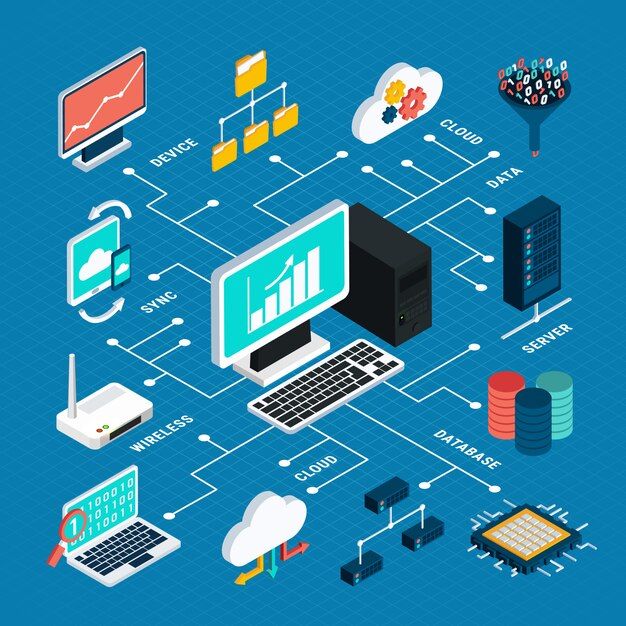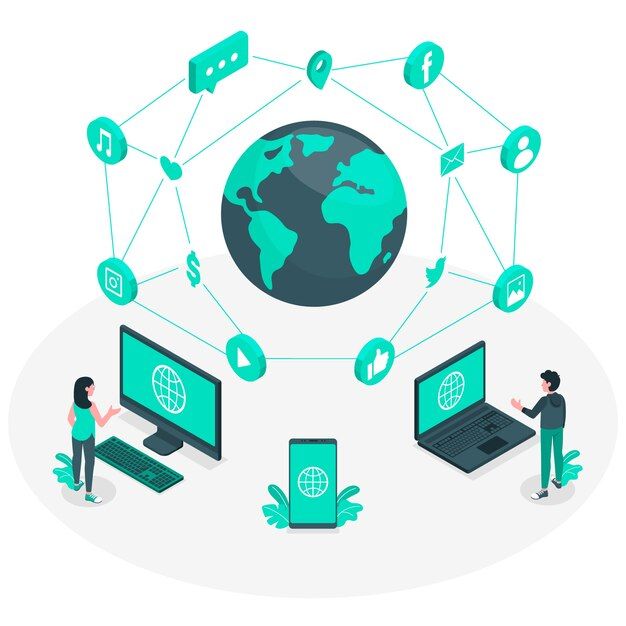Computer Networks
Computer Networks
Unit 1

Types of Computer Network Pdf
Computer Network Types LAN (Local Area Network) WAN (Wide Area Network) MAN (Metropolitan Area Network) PAN (Personal Area Network).
26 March 2024
Read more

Network Topologies in Computer Network
Network topology refers to how data travels within a network and how devices are linked together. Bus Topology, Star Topology, Ring Topology and Mesh Topology.
5 December 2024
Read more

Transmission Media in Computer Network
Transmission media in computer network refer to the physical pathways. Types of Transmission media Guided media and Unguided media.
5 December 2024
Read more

Network Devices in Computer Network
Network devices in a computer network are physical devices or virtual components that enable the transmission. These devices such as Hubs, Bridges, Switches.
5 December 2024
Read more
Unit 2

Multiplexing in Computer Network
Multiplexing in computer networks refers to the technique of combining multiple data streams or signals into a single channel for more efficient data transmission.
26 March 2024
Read more

Data Link Layer in Computer Network
Data Link Layer in Computer Ntework also known as Layer 2nd of the OSI (Open Systems Interconnection) model, acts as the vital bridge between the Physical Layer and the Network Layer.
31 March 2024
Read more

Switching in Computer Network
Switching in computer networks refers to the process of forwarding data packets from one device to another within a network. Types of Switching such as Circuit Switching , Packet Switching and Message Switching.
26 March 2024
Read more

Transmission Modes in Computer Network
Transmission mode refers to the way data is transmitted between two devices. Transmission modes such as Simplex, Half Duplex and Full Duplex.
26 March 2024
Read more
Unit 3

IP Addressing in Computer Network
An IP (Internet Protocol) address is a numerical label assigned to each device connected to a computer network. IPv4 (Internet Protocol version 4) IPv6 (Internet Protocol version 6).
26 March 2024
Read more

Unicast Routing Protocols in Computer Networks
Unicast routing protocols like RIP, OSPF, and BGP play crucial roles in determining how data packets are routed in computer networks.
26 March 2024
Read more

Types of Routing in Computer Networks
Routing in computer networks is about choosing how data travels. There are two types: Static Routing: Manual, and predictable. Dynamic Routing: Automatic.
26 March 2024
Read more
Unit 4

What is OSI Model | 7 Layers Explained with Examples
The OSI Model, created by ISO in the late 1970s, is a core framework in computer networking, dividing network communication into 7 layers in the OSI Model.
26 March 2024
Read more

Network Topologies in Computer Network
Network topology refers to how data travels within a network and how devices are linked together. Bus Topology, Star Topology, Ring Topology and Mesh Topology.
5 December 2024
Read more

Transport Layer in Computer Networks
In computer networks, the Transport Layer in OSI model serves as a critical bridge between applications, ensuring reliable communication, efficient data sharing
26 March 2024
Read more

Transmission Media in Computer Network
Transmission media in computer network refer to the physical pathways. Types of Transmission media Guided media and Unguided media.
5 December 2024
Read more

What is Session Layer in OSI Model
Session Layer in the OSI Model serves as a critical intermediary that manages sessions, ensuring their establishment, maintenance, and graceful termination.
26 March 2024
Read more

What is TCP/IP Model | 5 layers Explained
TCP/IP (Transmission Control Protocol/Internet Protocol), is a set of communication protocols that form most computer networks. It consists of five layers.
26 March 2024
Read more

Network Devices in Computer Network
Network devices in a computer network are physical devices or virtual components that enable the transmission. These devices such as Hubs, Bridges, Switches.
5 December 2024
Read more